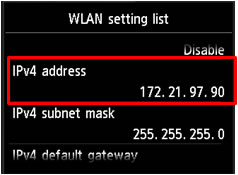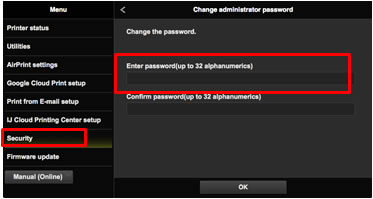Thank you for using Canon products. This document gives information on how to protect your PIXMA series inkjet printers , MAXIFY series business inkjet printers , Laser Beam Printers and Small Office MFPs (LBP and MF series) , (hereinafter referred as “printers”) against unauthorized access via the network. If you are using printers in the network environment or if you are an administrator, Canon recommends that you read through this document before use.
Phenomenon
These days, by connecting your printer to the network, you can enjoy various useful functions including printing via the network. Introduced below are the points to protect your printers from unauthorized access when you use them in the network environment. The setting procedures or illustrations given in this document are examples, and they may differ from the ones of your printer. For specific details, refer to the Instruction Manual of your printer.
Points to protect your printers against unauthorized access:
- Use a private IP address. Check your printer’s IP address.
- Use a firewall or Wi-Fi router to limit communication. Have you ever changed the Wi-Fi router settings?
- Set the password to your printer. Utilize the password.
Affected Products
- Inkjet Printer (PIXMA series)
- Business Inkjet Printer (MAXIFY series)
- Laser Beam Printers and Small Office MFPs (LBP and MF series)
- To Protect Your Printers From Unauthorized Access
Support
Using Private IP Address
An IP address is a number that is assigned to each device on the network. An IP address that is used to connect to the Internet is called “global IP address,” while an IP address within a local area network (LAN) is called “private IP address.” If a printer uses a global IP address, it can be accessed by the general public, which will increase risk of information leakage by unauthorized access from outside. If a printer uses a private IP address, then it can only be accessed by users on the same local area network (LAN) as the printer is connected to. In general, Canon recommends that you use a private IP address for your printer. An IP address within the ranges listed below is a private IP address. Check if your printer’s IP address is a private one.
Range of the private IP address:
- 10.0.0.0 to 10.255.255.255
- 172.16.0.0 to 172.31.255.255
- 192.168.0.0 to 192.168.255

| MEMO: Even if your printer uses a global IP address, you can reduce risk of unauthorized access by blocking access from outside using the firewall, etc. |
How to check your printer’s IP address (Example: MG7500 series)
|
Setup
↓
[ Device settings ]
↓
[ LAN settings ]
↓
[ Confirm LAN settings ]
↓
[ WLAN setting list ]
Note: For specific procedures for checking the IP address, refer to the Instruction Manual of your printer.
|

|
Using a Firewall or Wi-Fi Router to Limit Communication
Firewall is a system to protect against unauthorized access from outside and to prevent network attacks or hacking. By restricting communication with a certain external IP address, you can block suspicious access from outside. Home-use Wi-Fi routers have similar functions. Be cautious when you change their settings.
Setting the Password to Your Printer
By utilizing the password functionality, you can protect various information of your printer and significantly reduce risk of information leakage in case of malicious access to the printer.
Note:
-
No password is set by default depending on the printer model. Set the password.
- Some printer models do not have the password functionality.
- For specific procedures for setting the password, refer to the Instruction Manual of the printer.
| |
MEMO: Printers have the password functionality for printer protection. What is important for your security is the proper use of the password. Keep the following in your mind in using the password:
- Always set the password.
- Change the password periodically.
- Avoid using an easy-to-guess password.
- DO NOT tell the password to others.
|
Screen Examples
Remote UI
The screen to set the password you will see at login to the Remote UI:

|
MEMO: Remote UI (User Interface) is the software that lets you access to the printer from a web browser in hand. You can check and change various printer settings using Remote UI without coming to the printer. When you enter the printer IP address or host name in the web browser, you will see the portal page of Remote UI.
Note: For details of Remote UI operation, refer to the Instruction Manual of the printer.
|
Contact Information
Should you have any questions about the announcement, please contact the Authorized Service Facility in your area or you may contact the Call Center within your region. |






